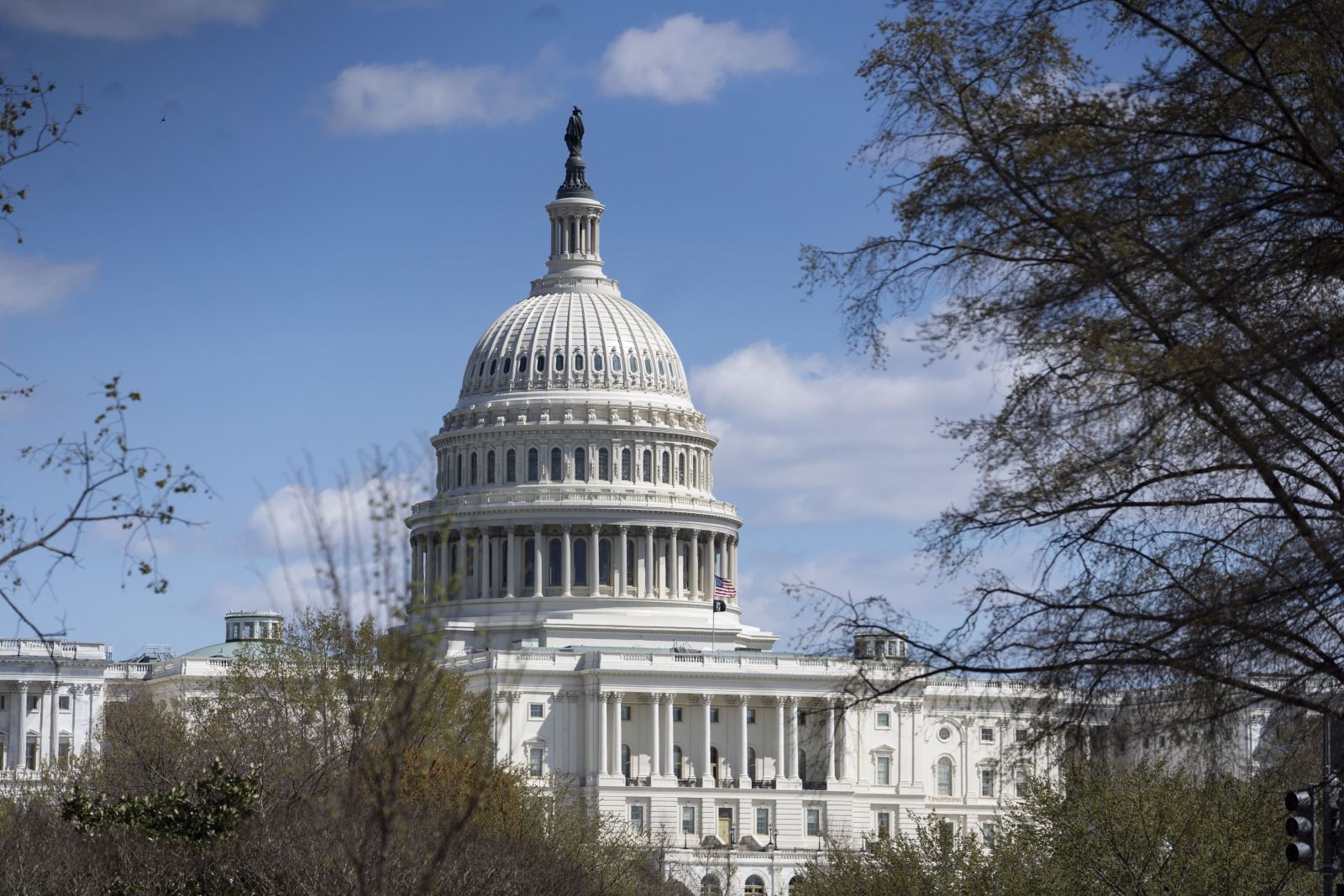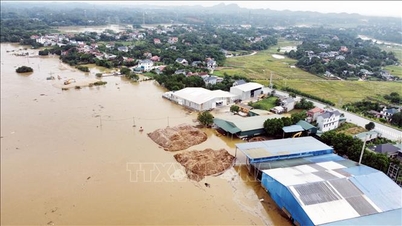
According to European news site Euronews.com, the political turmoil in the US has caused the government to shut down for the first time since 2019 after the Senate failed to pass a budget, reflecting deep political polarization and the risk of major impacts on the economy , social life as well as public confidence in the political system. However, the Trump administration has announced that it will take advantage of the situation to promote the streamlining of the federal apparatus.
On September 30, the US Congress entered a deadlock when the Senate rejected both short-term spending bills. Specifically, the Senate voted 55/45 to reject the bill passed by the House of Representatives, with only three Democratic or independent senators joining the Republicans. Previously, the Democratic bill to extend spending until October 31 and reverse the $1 trillion Medicaid cuts also failed to pass, with a result of 53/47.
Republicans say their bill is only a seven-week temporary solution, similar to previous precedents, but Democrats counter that it does not include substantive health care negotiations.
The current annual federal budget expires on September 30, 2025, and the next budget for fiscal year 2026 would run from October 1, 2025, to September 30, 2026. US government spending is divided into two categories:
Mandatory spending: Essential spending, such as social security, air traffic control, and the military, is automatically approved permanently and must continue to operate.
Non-mandatory spending: Other spending that must be formally approved each year through 12 appropriations bills voted on by Congress.
If these appropriations bills fail to pass, a “shutdown” will occur, meaning a temporary suspension of non-essential government services. Unless Congress passes at least a temporary measure called a continuing resolution to temporarily authorize some discretionary government spending, there have been 14 such shutdowns since 1980, according to the Bipartisan Policy Center.
Who is directly affected?
According to the Wall Street Journal, more than two million federal workers are directly affected: Civil servants working in non-essential services will be furloughed. Employees in essential services will still be required to work, but without pay.
However, once the government reopens, the salaries of relevant public employees (whether furloughed or employed) will be paid in arrears. Work will resume as soon as Congress passes the necessary appropriations bills.
Budget Director Russ Vought has directed agencies to prepare for mass layoffs and furloughs of federal employees, with an estimated 750,000 workers being forced to stop work each day, at a cost of about $400 million a day.
Political deadlock escalates
The complication lies in the voting process: a continuing resolution requires a 60-vote majority in the Senate, while in the House it requires only a simple majority.
As things stand, approval of a new continuing resolution would require the support of at least seven Democrats to reach the 60-vote threshold. Democrats are conditioning their support on maintaining some social spending that Republicans oppose, including extending the Obamacare tax credit, which expires at the end of the year.
It will take three consecutive continuing resolutions to avoid a government shutdown in 2023. Currently, a continuing resolution passed on March 11, 2025, authorizes discretionary spending funding through midnight September 30, 2025.
The Senate is expected to vote again on the Republican bill to increase pressure. However, the chances of reaching a deal before the deadline are virtually nil. Some Republican senators have indicated they are willing to negotiate on ACA subsidies, but insist any concessions will come only after the government reopens.
Meanwhile, Democrats are preparing a massive media campaign to project a proactive image, with multiple press conferences and public events this week. If the stalemate drags on, the economic and psychological consequences could extend far beyond the budget, undermining confidence in the federal government’s ability to govern.
A previous poll found that 33% of voters blamed both parties for a government shutdown, with 38% blaming Republicans and 27% pointing the finger at Democrats. This suggests that both sides face significant political risk, especially as the 2026 election year approaches.
Severe economic impact
A halt to discretionary spending, which accounts for 27% of total federal government spending, would have significant consequences:
Impact on GDP: Public service production temporarily declines, reducing gross domestic product (GDP). Consumption by public employees on unpaid leave also falls sharply.
Economists estimate that each week of shutdown reduces real quarterly GDP by 0.1% to 0.3% relative to normal levels. A month of shutdown would therefore reduce real quarterly GDP by 0.5% to 1.5%. While consumer spending will be offset later by back pay for public employees, the likelihood of a full recovery of lost consumption is low.
For example, after the 35-day 2019 shutdown, the Congressional Budget Office estimated that the economy permanently lost $3 billion in real GDP.
Crisis in business and finance
Public administrations have had to suspend payments to suppliers, putting many companies in difficulty, threatening operations and possibly even causing bankruptcy if the shutdown is prolonged.
Yields on US government bonds are set to rise as investors view them as riskier, raising concerns that the US could default on its government bonds by 2025 if a deal to raise the debt ceiling fails to be reached in December.
Higher interest rates on public debt could lead to a widespread increase in credit interest rates, especially mortgage rates, exacerbating the housing crisis. Some national insurance programs would be unable to operate, discouraging potential homebuyers from seeking insurance to borrow, causing a housing market downturn.
The shutdown will affect statistical indicators needed to guide investors in financial markets and the Federal Reserve's monetary policy. Most of the statistics are produced by government agencies whose operations are suspended.
In short, stock prices could fall due to rising interest rates, reduced economic activity and lack of statistical transparency. The immediate consequences could be that hundreds of thousands of public employees will lose their income temporarily and the economy could lose billions of dollars.
Source: https://baotintuc.vn/the-gioi/nhung-thiet-hai-tam-tinh-tu-viec-chinh-phu-my-dong-cua-20251001153558293.htm



![[Photo] Keep your warehouse safe in all situations](https://vphoto.vietnam.vn/thumb/1200x675/vietnam/resource/IMAGE/2025/10/1/3eb4eceafe68497989865e7faa4e4d0e)

![[Photo] President of the Cuban National Assembly visits President Ho Chi Minh's Mausoleum](https://vphoto.vietnam.vn/thumb/1200x675/vietnam/resource/IMAGE/2025/10/1/39f1142310fc4dae9e3de4fcc9ac2ed0)

![[Photo] Hanoi morning of October 1: Prolonged flooding, people wade to work](https://vphoto.vietnam.vn/thumb/1200x675/vietnam/resource/IMAGE/2025/10/1/189be28938e3493fa26b2938efa2059e)



















































































Comment (0)